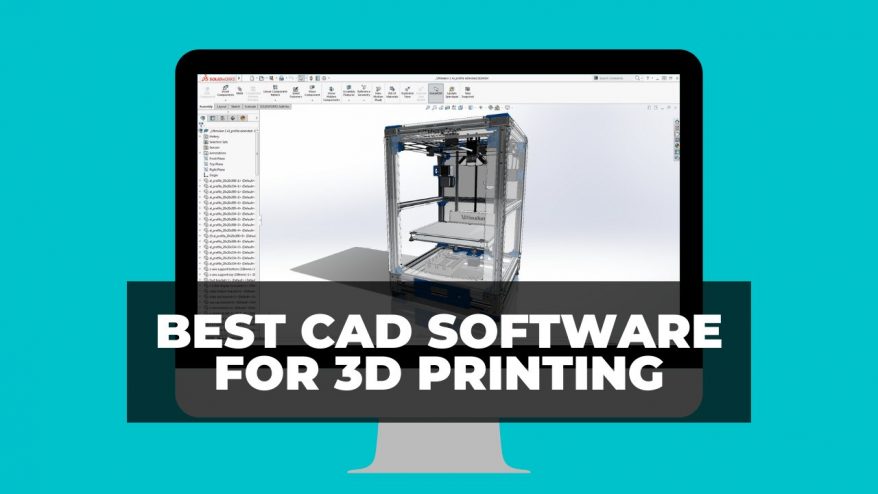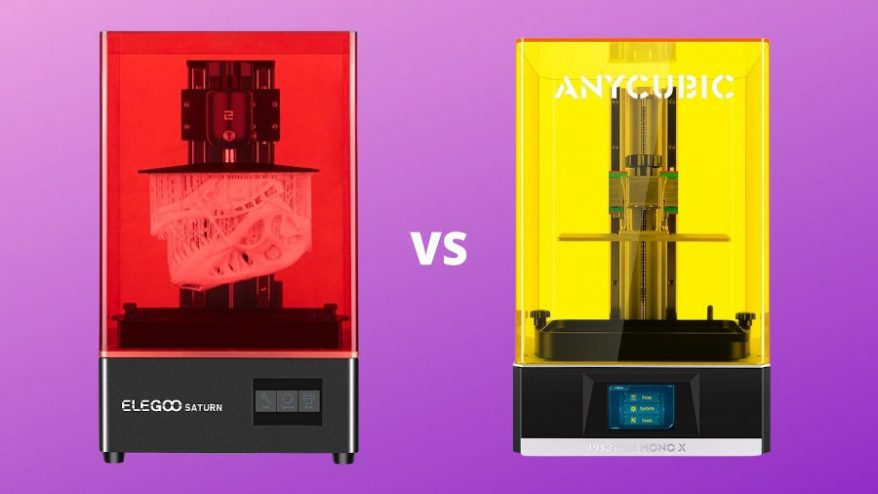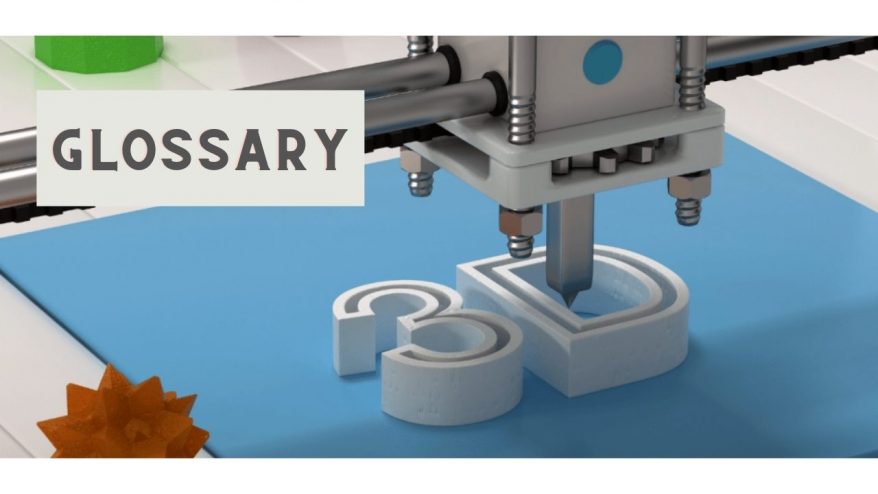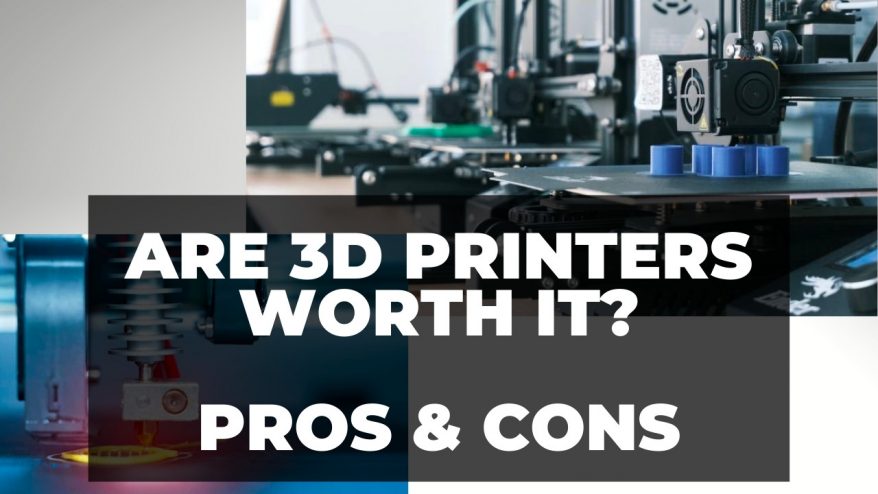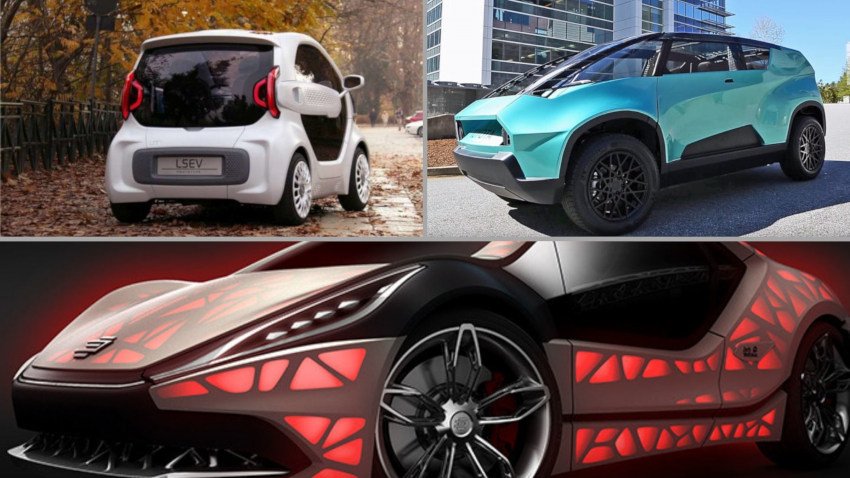
The 10 Most Exciting 3D Printed Cars & Supercars 2023


At 3DSourced we’ve covered everything 3D printing and 3D since 2017. Our team has interviewed the most innovative 3D printing experts, tested and reviewed more than 20 of the most popular 3D printers and 3D scanners to give our honest recommendations, and written more than 500 3D printing guides over the last 5 years.
Cars are made from thousands of parts, including some that are incredibly intricate and difficult to make. Enter 3D printers — especially metal 3D printers — that can create these 3D printed car parts on-demand, quickly, accurately, and can create lighter parts that use less petrol.
Experts predict that the 3D printed car market will grow to a $5.3bn industry by 2023, increasing to $12.4bn in 2028. 3D printed cars are predicted to have an impact throughout the automotive industry, ranging from parts — classic car parts, and for new cars — low cost prototypes, tools, and more.
- We have also written a feature story into the uses of 3D printed car parts
- Additionally, we have a feature story into 3D printing in the automotive industry
Advantages of 3D printed cars

How long until a 3D printed car cracks the mainstream car market?
3D printed cars are not far away at all from being regularly seen on city streets. Finished, working prototypes have been around since 2014, and 3D printed buses have been active on an American university for the last three years.
That being said, a fully 3D printed car is yet to hit the city streets. Though small numbers of 3D printed car parts are commonplace, the closest completely 3D printed car to getting a wide release, the LSEV, is yet to announce a concrete release date.
Therefore, we created our ranking of the exciting 3D printed car designs, prototypes and models to showcase the upcoming 3D printed car revolution.
1 – Divergent3D Blade – Awesome 3D Printed Supercar
- Top speed: around 200mph
- 0-60mph time: 2.5 seconds
- Weight: 619kg
Divergent3D are an ambitious and exciting company who have developed the Blade 3D printed supercar, made from carbon fiber tubes and 3D printed aluminium rods.
The company’s ethos is to test how alternative and innovative new ways of manufacturing can bring down costs and make more lightweight yet beautiful cars. The result is the Blade, a 3D printed supercar capable of 200 mph, and equipped with 629 horsepower. The car looks tremendous and will undoubtedly be in-demand by those for whom the likely steep price is no barrier.
Despite not receiving a wide release yet, Divergent founder Kevin Czinger has since released images of a personal project, the Czinger 21C, which is even more extraordinary than the Blade. Capable of a claimed 268mph and with a 1233 bhp engine, the 21C would be one of the fastest cars of all time.
Divergent have recently had to shed a third of their staff due to the COVID-19 pandemic, but we hope they can succeed and release the first 3D printed supercar for the world to enjoy.

2 – EDAG Light Cocoon
- Top speed: around 155mph
- Price: estimated $100,000
Unveiled at the Geneva Motor Show in 2015, the EDAG Light Cocoon is a fantastic example of how 3D printed cars can be lightweight but still retain their strength.
Created mostly using Selective Laser Melting, similar to Direct Metal Laser Sintering, though also involving FDM and Stereolithography, EDAG plan to fully finish and release the car in around 2025. This may sound far away, but EDAG are merely working on a realistic timescale for the amount of innovation and work that is required to build a fully 3D printed car of that power. Even so, this is a project that most definitely excites us.

3 – Nanyang Venture 8
- Top speed: 37mph
Created by a group of students and staff at Nanyang Technological University in Singapore, the Nanyang Venture 8 3D printed car contains over 150 3D printed parts.
Mostly made from ABS material, the team elected to use 3D printing for the car’s shell, grills, door latches, and more. They used an FDM 3D printer to create these parts.
Able to reach speeds of up to 37mph, what’s most interesting about the team behind the NV 8 is that they have since designed its successor, the NV 9, which is partially solar powered. This opens up the possibility of solar powered cars in the future. Both the NV 8 and NV 9 appeared in the Shell Eco-Marathon Asia.

4 – Local Motors Strati 3D printed car
- Top speed: 40mph
- Full charge range: 100-120 miles
- Price: estimated $18,000-$30,000
Conceptualized in collaboration with Cincinnati Incorporated alongside Oak Ridge National Laboratory (ORNL) who supplied the large FDM 3D printer, Local Motors‘ Strati is claimed to be the first ever electric 3D printed car.
The Strati took 44 hours to 3D print back in 2014 – though Local Motors intend to get this down to 10 hours – showcasing it for the first time at the 2014 International Manufacturing Technology Show in Chicago. The design was credited to Italian Michele Anoe, who won $5,000 for the design.
Read more: best car design software (2D and 3D designs)
With a top speed of around 40mph (64kph) and a range of between 100-120 miles, the Strati isn’t just a shiny toy, and is on the fringes of usable for daily life. The price is estimated to be between $18,000-$30,000 with production originally planned for the end of 2015, but in 2020 there is still no official news on the Local Motors website.
What we most like about the Strati however is its environmental friendliness. The thermoplastic used by the FDM 3D printer is fully recyclable, so an old and damaged car can be stripped of this material and reused to make a new 3D printed car. Only the electrical components like the battery and motors, and suspension need to be manually assembled, which is a very exciting development.
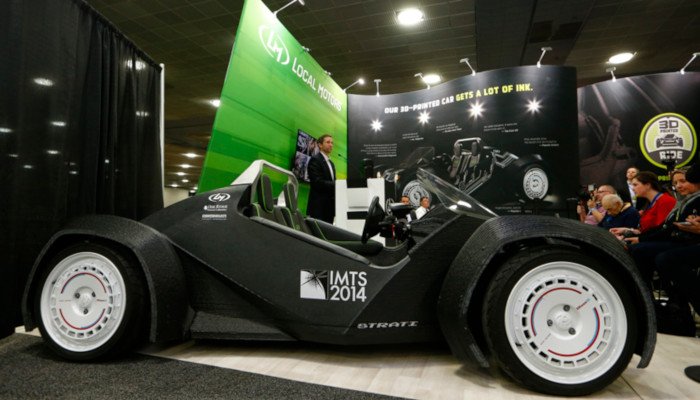
5 – LSEV
- Top speed: 43mph
- Full charge range: 90 miles
Born out of a collaboration between Hong Kong design firm XEV, and Chinese 3D printing company Polymaker, known best for making 3D printer filaments, the LSEV is an electric 3D printed car that was originally set to hit the Asian and European markets in 2019.
Affordably priced at $7,500, the LSEV is completely 3D printed except for the tires, windows, seats and chassis – both the interior and exterior are 3D printed.
As a result, the LSEV 3D printed car weighs just 450kg, and can drive for around 90 miles on a full charge at a top speed of 43mph. What’s more, the LSEV is 3D printed using fused deposition modeling, and takes just 3 days to completely print.
3D printing was chosen due to its ability to reduce investment costs by a massive 70%, as production is more efficient and less components need to be made. In fact, 3D printing reduced the number of parts needed to make the LSEV from 2,000 down to just 57!
The companies have claimed that these factors make the LSEV an attractive prospect to car buyers, with 7,000 pre-orders claimed to have been made. 3D printing in cars is shown in the LSEV to reduce costs and weight, and encourage the switch to electric cars, which are all beneficial to the environment, and therefore we highly support the increasing adoption of 3D printed cars.
However, now well into 2020 we have not seen a wide release of the LSEV. The company launched a Kickstarter at the end of last year to raise $500,000 for a new 3D printed car, but just under $100,000 was reached and it failed to reach the target. We hope to see the LSEV, or a variant of it, release soon.

6 – PUV ORNL 3D printed car
- Top speed: 35mph
- Full charge tank: 35 miles
The PUV is a 3D printed car developed as part of Oak Ridge National Laboratory’s AMIE project. The project aimed to innovate how we use and store energy, with the PUV being equipped with the incredible ability to wirelessly transfer electricity to and from nearby buildings.
The PUV qualifies for our 3D printed car list as it has 3D printed body panels in order to save weight and money, made from carbon fiber-reinforced plastic. Though the PUV can only travel up to 35 miles on a full charge, the fact that it can wirelessly transmit energy makes it a fantastic innovation which we will hopefully see more of in the future.

7 – Toyota uBox
Created from a collaboration between Toyota and Clemson University’s International Center for Automotive Research, the Toyota uBox is a futuristic looking concept car with a 3D printed interior.
Though most of the functional parts of the car are made using traditional techniques, Toyota are experimenting in 3D printed car interiors with the uBox.
Their idea is that, in the future, customers will elect to customize their car’s interior, such as the door trims, dashboard or air vents. Toyota plan to service this market with 3D printed car parts, and eventually allow customers to 3D print their own car parts from home to customize their cars. This is another fantastic example of how 3D printing is being used to add value and customization in new areas.

8 – Project M
- Top speed: 156km/h
Project M is another ambitious 3D printed car project. Made by Shell, Project M is a compact car made of 93 3D printed parts that was designed to be maximally energy efficient.
As a result, whilst weighing just 550kg, Shell’s Project M 3D printed car can reach speeds of 156km/h using its powerful petrol engine. Shell elected to use 3D printing as it saved them money; they no longer had to outsource production and instead could create complex plastic parts quickly and in-house. This shows how effective 3D printing is in reducing the barriers to manufacturing.

9 – BMW S1000RR 3D printed bike
So maybe not exactly a 3D printed car, but instead a 3D printed bike, we still felt that the BMW S1000RR deserved a place on this list.
Though not completely 3D printed, this innovative bike does include a 3D printed frame and swingarm, which were 3D printed as it saved BMW money and was quicker to make.
The S1000RR follows over 10 million Euros of investment by BMW in their new 3D printing and additive manufacturing center, with the aim to make future designs lighter. Therefore, we expect to see more 3D printing in future BMW bikes and cars.

10 – Olli 3D printed bus
- Top speed: 35mph
- Max carry load: 612kg
Olli is another of Local Motors’ innovative inventions in the automotive sector. Not only is Olli a futuristic and sleek-looking 3D printed bus, but it’s also autonomous, and can drive itself to wherever you want to go.
Local Motors are striving to improve travel with Olli, which can come and pick you and your friends up if you hail it, and drop you to your destination. It’s already seeing use on university campuses such as Sacramento State. Having received masses of funding to advantage electric, autonomous cars, many clearly have high hopes for Olli, so we will have to see if more of these innovative 3D printed buses start appearing all over major cities.

Related Articles:












